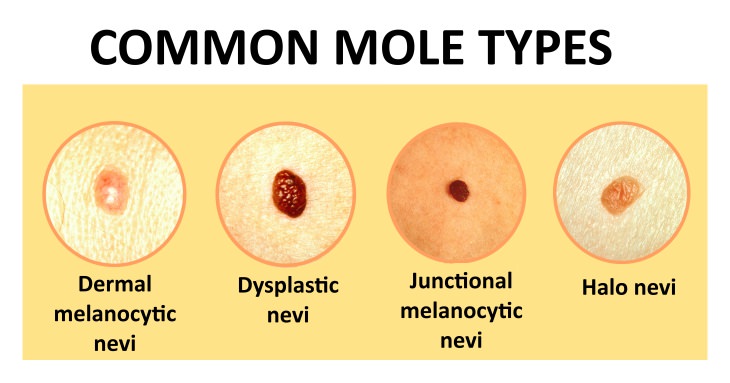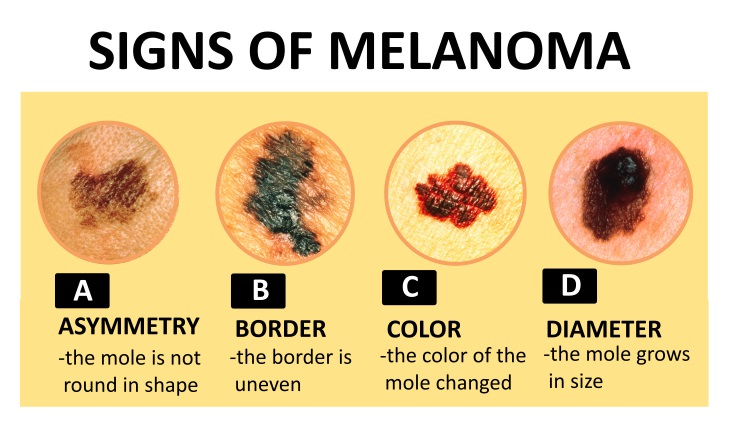2. If it shows signs of cancer. Moles that
change in color or shape, grow, start itching, cause pain, get red or
inflamed may be malignant melanoma. But even if you don’t experience any
of these symptoms and you have new moles appearing and you’re past the
age of 20, it’s best to get them checked by a dermatologist as these
moles may be cancerous as well. Needless to say, all cancerous skin
tumors must be removed.
Above you can find the so-called ABCD of melanoma symptoms that can
point to a potentially dangerous mole. We also have an interactive guide
about this ABCD method you can view here.
What Methods of Mole Removal are Safe?
We have touched upon mole removal at the beginning of the article, but
in this section, we will discuss mole removal procedures in greater
depth.
There are many methods of removing moles,
such as over-the-counter creams and traditional methods, but there are a
few problems with these remedies, namely:
Oftentimes, these methods don’t remove
the root of a mole, which means it can grow back.
Shaving off, snipping it with scissors or burning out a mole using
at-home treatments may cause skin infections.
Skin cancer may be overlooked if you remove a troublesome mole at
home and don’t get the skin sample tested by a dermatologist.
Many topical creams and natural remedies can cause extreme scarring
and extreme scar tissue growths called keloids.
The safest and most successful way of getting a mole removed is by your
dermatologist, and there are 2 main ways doctors remove moles:
1. Via surgical excision.
This method completely removes the mole with
its root. The doctor will numb the treatment area and cut out the whole
mole completely. After that, the dermatologist will make stitches or
sutures to close up the wound.
2. Via a surgical shave.
During this procedure, after numbing the area,
the doctor will shave off the mole using a blade. The advantage of this
method is that it doesn’t require stitches or sutures, but sometimes,
the mole can grow back and will need to be shaved off again.
Both methods don't require any particular aftercare and are executed in a
sterile environment, which makes sure no complications occur after the
procedure. Apart from that, the doctor will usually check a sample of
the mole under a microscope to make sure it's not cancer.
This is only for your information, kindly take the advice of your doctor for medicines, exercises and so on.
https://gscrochetdesigns.blogspot.com. one can see my crochet creations
https://gseasyrecipes.blogspot.com. feel free to view for easy, simple and healthy recipes
https://kneereplacement-stickclub.blogspot.com. for info on knee replacement
https://cancersupportindia.blogspot.com for infor on cancer and health related topics
https://GSiyers
home remedies.blogspot.com is the latest addition to my blogs. I'm
going to add posts there, do give me your valuable feed back on my
blogs. Thanks a lot, take care, be healthy and be happy.



0 Comments:
Post a Comment
<< Home